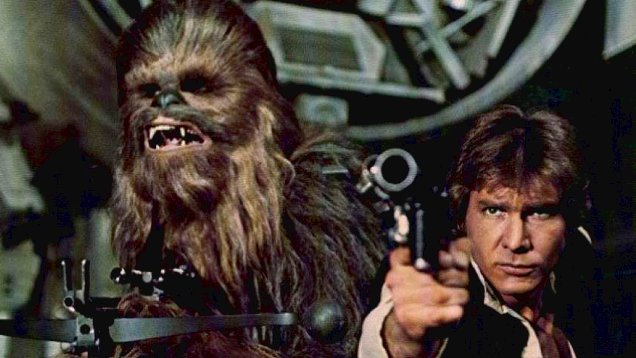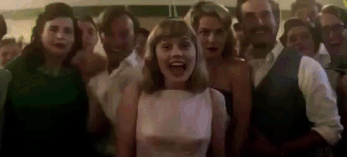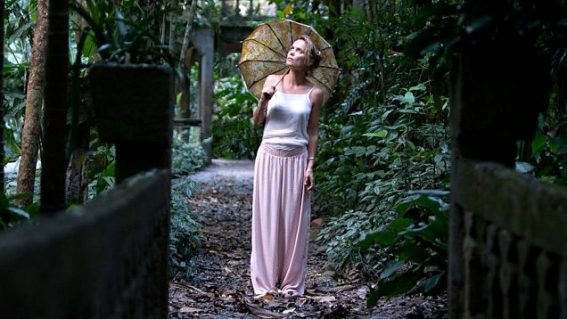Ladies in Black is an exquisitely entertaining story of romance and female empowerment

Topics dominating the current news cycle get a sanitized but heartfelt and charming exploration in Bruce Beresford’s long-gestating passion project Ladies in Black. A frothy morsel that pops and fizzes as the women at a Sydney department store at the tail-end of the 1950s take centre stage, in a story of romance and female empowerment built around Australia’s history of multiculturalism and the cultural debt we owe the many refugees who have come here to make Australia their home. All blessed by the sun-kissed setting of Christmas time on the harbour as the lower and middle classes strive for new possibilities in an evolving Australia.
Leslie (Angorie Rice) has taken a job at the high-end Goode’s (think David Jones or Myer) where all the staff wear divinely chic black dresses. She works and learns as she awaits her high school exam results and the potential for a university placement. This is something championed by her mum (Susie Porter) but fiercely rebuked by her dad (Shane Jacobson).

At Goode’s, she is assigned a counter alongside blonde bombshell Fay (Rachael Taylor) and redhead Patty (Alison McGirr), who each struggle with romantic woes. Leslie, or Lisa as she prefers to be known at Goode’s, is soon taken under the wing of the store’s haute couture queen, a Hungarian export named Magda (Julia Ormond). She is mockingly labelled a ‘continental’ and a ‘reffo’ who fought through war and Australian refugee camps to become a success, bringing European style to Australian women in a time of economic boom.
First as a novel and later a stage musical, there is an obvious reason why the story of Ladies in Black strikes such a chord across many mediums. Film is perhaps its most logical destination, where the sumptuous costumes and divinely decadent sets are allowed their deserved close-up. The way every ruffle of a dress or lace embellishment is offered a moment and how audiences can admire the pattern of a gown as much as the acting recalls Jocelyn Moorhouse’s The Dressmaker, although Beresford’s film lacks that movies topsy turvy tonal shifts and dark sense of humour.
No, Ladies in Black is sunny feelgood entertainment all the way. And while one may wish the relevant contemporary themes around refugees were given slightly more weight – for example, one character’s skittishness towards the migrant population is scuttled by a taste of salami, red wine and duck liver pâté – it’s hard to truly be upset when everything else is so wonderful. It’s genuinely rare to find a movie that can put a large smile on my face for such a prolonged amount of its runtime, but Ladies in Black does just that.
Part of what makes the movie so successful is the scope of its story. While never straying far from the path expected by Leslie’s coming of age story, we are granted a wealth of additional story in the form of Magda’s desire to start her own business, Fay’s romance with a dashingly handsome European man (Ryan Corr) and Patty’s troubled marriage (easily the most bizarre of the main plot strands for reasons that will become very obvious).
We also get to see, however briefly, inside the lives of the many supporting characters including store supervisor Miss Cartwright (Noni Hazlehurst) and Fay’s best friend, a burlesque dancer named Myra (Celia Massingham). They are moments that illuminate their plights and provide depth where many other films, even those with just a fraction of the female cast of Ladies in Black, would not have bothered.
Ultimately the story is Leslie’s and Rice does a fine job as the axis upon which all the other stories spin. International blow-in Ormond commands a regal presence, and Taylor is the subtle MVP of the whole picture as she carves out a history of sadness for Fay built out of glimpses in her eye and pauses in her speech. The male cast, too – especially Vincent Perez as Magda’s husband – are light and amusing sounding boards for the women who rightly dominate the picture.
Ladies in Black is far too genteel to slide into farce. For better or worse this is not a film by a Baz Luhrmann or a Stephan Elliott or a PJ Hogan. With his first Australian feature since Mao’s Last Dancer, Beresford has made a film in which good things happen to nice people – and sometimes that’s all we want from our time in a darkened theatre. Is it romanticised and sanitised? Sure. But he’s made a film that feels of its era and audiences willing to ignore its lack of genuine stakes will no doubt succumb to its charms. It is a classical slice of entertainment, the likes of which the Australian industry rarely offers up.


















